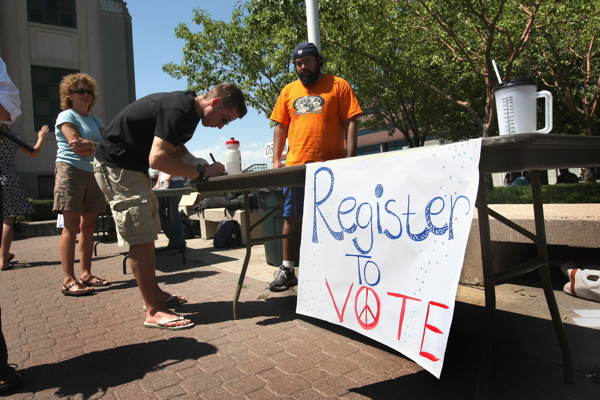Voter ID Is The Real Fraud

The Article: Voter ID Is the Real Fraud in The New York Times.
The Text: For the first time since the Supreme Court junked a core provision of the Voting Rights Act in June, a federal court has used the strongest surviving part of the act to strike down a state’s voter-identification law, and, in the process, has set out a detailed road map for upcoming challenges to similar laws around the country.
Supporters of these laws insist they are necessary to prevent fraud at the polls, though such fraud is basically nonexistent. The real point is to deter from the polls significant numbers of Democratic voters, particularly minorities and the poor.
That was the heart of the reasoning by Judge Lynn Adelman of Federal District Court in Milwaukee, who issued an extraordinarily thorough 90-page ruling on Tuesday invalidating Wisconsin’s voter-ID law as a harmful solution in search of an imaginary problem. The law was passed by a Republican-controlled statehouse in 2011 and required that a prospective voter present a government-issued photo ID, like a driver’s license or passport.
“Virtually no voter impersonation occurs in Wisconsin, and it is exceedingly unlikely that voter impersonation will become a problem in Wisconsin in the foreseeable future,” the judge wrote.
“A person would have to be insane to commit voter-impersonation fraud,” he added, pointing to high costs of being prosecuted for that crime compared with the low benefits of casting one additional vote.
On the other hand, the judge found that 300,000 Wisconsin voters, or 9 percent of all registered voters, lack the required ID — more than twice the margin of victory in the most recent election for governor. “A substantial number” of those voters, the judge found, are lower-income and poorly educated residents who face a “unique barrier” to getting the underlying documents needed to obtain a photo ID. Some cannot afford the $20 for a birth certificate; others must spend weeks tracking down documents at government agencies inaccessible by public transportation.
In the end, it was easy for Judge Adelman to find the law unconstitutional under the equal protection clause. “It is absolutely clear,” the judge concluded, that the law “will prevent more legitimate votes from being cast than fraudulent votes.”
Equally important, the judge found that the law also violated Section 2 of the Voting Rights Act, which prohibits laws that have a disproportionate impact on minority voters. That’s because those voters are more likely to be poor and undereducated, the judge found, which “is traceable to the effects of discrimination in areas such as education, employment, and housing.”
Until now, Section 2 has been used primarily in redistricting lawsuits, but its application in the voter-ID context gives a potent weapon to challengers of similar laws in Texas and North Carolina. When the Supreme Court upheld Indiana’s ID law in 2008, it found no evidence of actual harm to voters. The Wisconsin ruling is important in part because it shows the power of the testimony of real, everyday people whose right to vote is demonstrably burdened by these laws.
Judges are at last starting to see voter ID for what it is: a concerted political effort by Republicans to keep opponents from the polls. Even former Supreme Court Justice John Paul Stevens, who wrote the 2008 opinion, now accepts that view as “dead right.” For those still unsure of voter ID’s true nature, Judge Adelman has paved the path.









